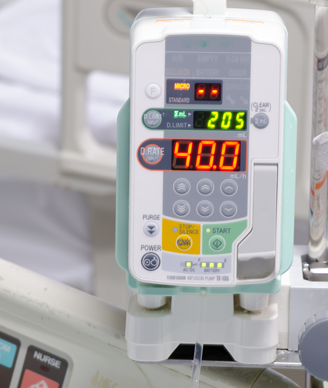Older Early-Stage NSCLC Patients Benefit From Adjuvant Chemotherapy
Early-stage non–small-cell lung cancer patients over 70 years old derive a similar benefit as younger patients from adjuvant chemotherapy following surgical resection.
Image © pruit phatsrivong / Shutterstock.com

A retrospective study found that early-stage non–small-cell lung cancer (NSCLC) patients over 70 years old derive a similar benefit as younger patients from adjuvant chemotherapy following surgical resection. This suggests that age should not preclude patients from receiving adjuvant chemotherapy.
“Studies conducted in the last decade have provided evidence that adjuvant chemotherapy after surgical resection improves outcomes for patients with resected stages II and IIIA disease and selected patients with stage I (large tumor size) NSCLC,” wrote study authors led by Apar Kishor Ganti, MD, of the University of Nebraska Medical Center in Omaha. These studies, however, have not focused specifically on elderly patients, and NSCLC has a median age of 70 years at diagnosis.
The new study was a population-based retrospective review of 7,593 patients with stage IB to stage III NSCLC who underwent surgical resection; 2,897 (38%) were aged at least 70 years. Results of the study were published online ahead of print in Cancer.
Among the younger patients, 31.6% received adjuvant chemotherapy, while only 15.3% of the older patients received this treatment (P < .0001). Both groups saw changes in rates of adjuvant chemotherapy over time, though of different magnitudes: 9.3% of younger patients diagnosed between 2001 and 2003 received adjuvant chemotherapy, which rose by 27.8% by 2009 to 2011. In older patients, the rate was 4.5% in the earlier period and increased by 16.0%. The most common chemotherapy option used in all patients (64.6%) was carboplatin-based doublets.
Both older and younger patients had better outcomes with adjuvant chemotherapy than without. In the younger group, adjuvant chemotherapy yielded a hazard ratio for death of 0.79 (95% confidence interval [CI], 0.72–0.86). In the older patients, the hazard ratio was 0.81 (95% CI, 0.71–0.92). In older patients, however, this benefit was only statistically significant during the 2004–2005 period, and only in stage IB and stage II disease. For younger patients, it was significant in stage II and III disease. The biggest improvement came in stage II patients, in both older and younger cohorts.
The authors noted that the lack of data on performance status is the study’s main limitation, as this factor often guides the use of adjuvant chemotherapy.
“Among patients who received adjuvant chemotherapy in the current study, older patients appeared to derive a similar magnitude of survival benefit with adjuvant platinum-based chemotherapy as younger patients after surgical resection of early-stage NSCLC,” the authors concluded. “Adjuvant chemotherapy should not be denied to older patients based on age alone.”
Eric Ko on Combining Radiation Therapy With Immunotherapy to Treat Non–Small-Cell Lung Cancer
September 18th 2018ONCOLOGY spoke with Eric Ko, MD, PhD, who recently published a review article with his colleagues on strategies for combining radiation therapy with immunotherapy for the treatment of non–small-cell lung cancer.